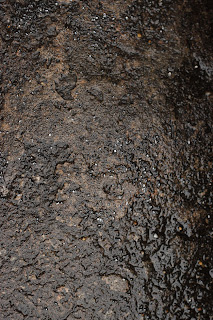Today we walked around the Nothern Quarter in Manchester to photograph the links between Music and Manchester and how the are celebrated. We also visited an exhibition of photos of Morrissey and The Smiths by Kevin Cummins at Manchester Photographic.
Manchester has been ranked as the second city of the UK, which has a lot to do with the influential culture scene. It is known for it's architecture, art, theatre, and music.
Manchester was home to some of the most influential and major bands in the industry's history and the people of the city are clearly proud of it! Bands like Joy Division, New Order, The Smiths, The Stone Roses, Happy Mondays and The Charlatans were all formed in Manchester.
The "Madchester" music scene brought much media attention to the city from the late 1980s to the beginning of the 1990s. Also at this time, Manchester was home to what was labelled 'the most famous nightclub in the world', The Hacienda.
Walking through the Nothern Quarter today, I noticed that everywhere I looked, I saw some sort of reference to music and to these famous Manchester bands. Music posters outside bars and on walls, stickers, flyers, record shops and even song lyrics on the ground.
Here are some images I took today using my Canon EOS 500D with my 50mm and 18-55mm lenses....
(Some of the images have nothing to do with music but I've put them up anyway because they give the vibe of the place)
There were lots of Vinyl shops with old and new music.
There were band stickers on every lamp post I walked past! This one caught my eye because I saw this band at the Manchester Apollo last year and actually have this sticker myself!
More old and new records and record shops.
Ex Stone Roses frontman, Ian Brown. I saw his face a few times today!
Oasis, of course, a very successful Manchester band.
Morrissey, frontman of Manchester band The Smiths.
At first, I thought that these were song lyrics in the pavement but have since been told by my fellow student Andy, that they're actually parts of a poem called 'Flags' by Lemn Sissay.
Bars and small music venues.
Chase. A music shop selling different instruments.
The next few images are taken from in and around Afleck's palace which is an indoor market with lots of independent stalls and boutiques. During the 1990s 'Madchester Summer of Love' period – when local bands like The Stone Roses, Happy Mondays and Inspiral Carpets were at the height of their popularity, Affleck's Palace was a fashionable spot to get oversized flared jeans and tie dyed t-shirts. The store is still full of creative design, bright young things, vintage clothing, vinyl and LOTS of music posters.
This is the last of my images from the day, bringing me onto the exhibition we visited at the Manchester Photographic gallery. The exhibition featured photographs of Morrissey and The Smiths taken by photographer, Kevin Cummins.
Cummins is a British Photographer from Manchester, most known for his photography of rock bands and musicians. He has photographed legendary musicians such as Joy Division, Sex Pistols, U2, REM, Oasis, Foo Fighters and The Smiths.






































































